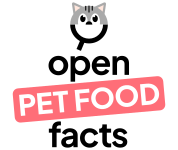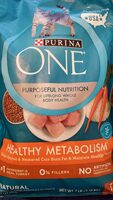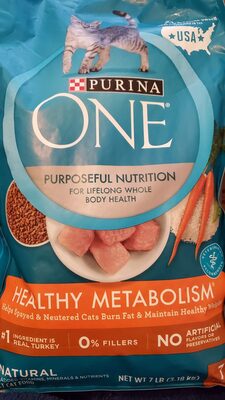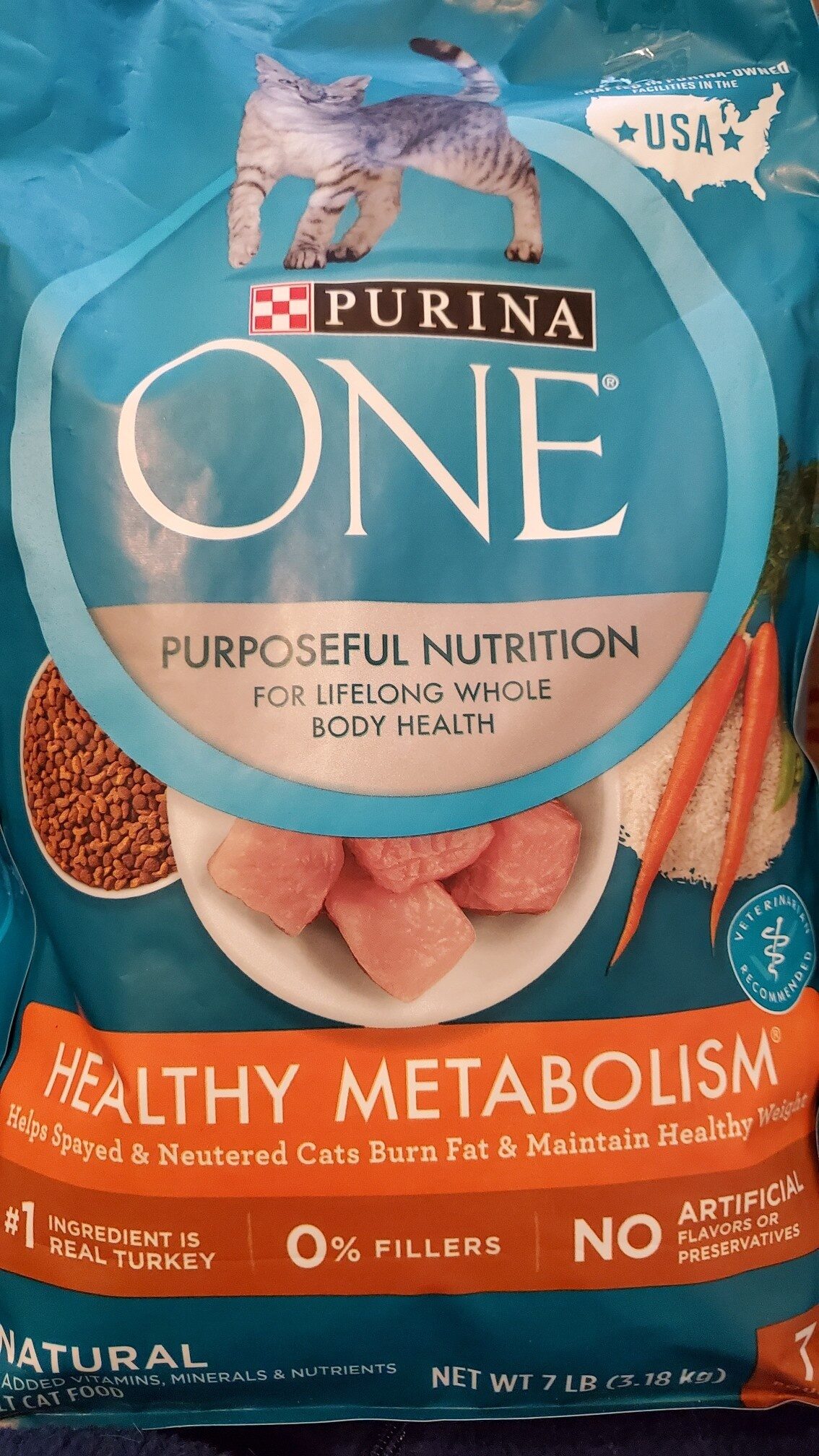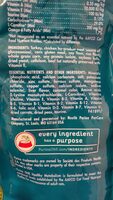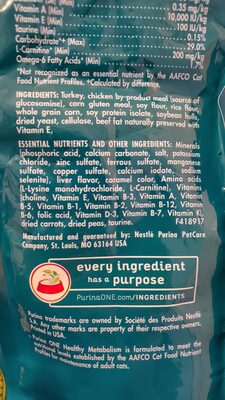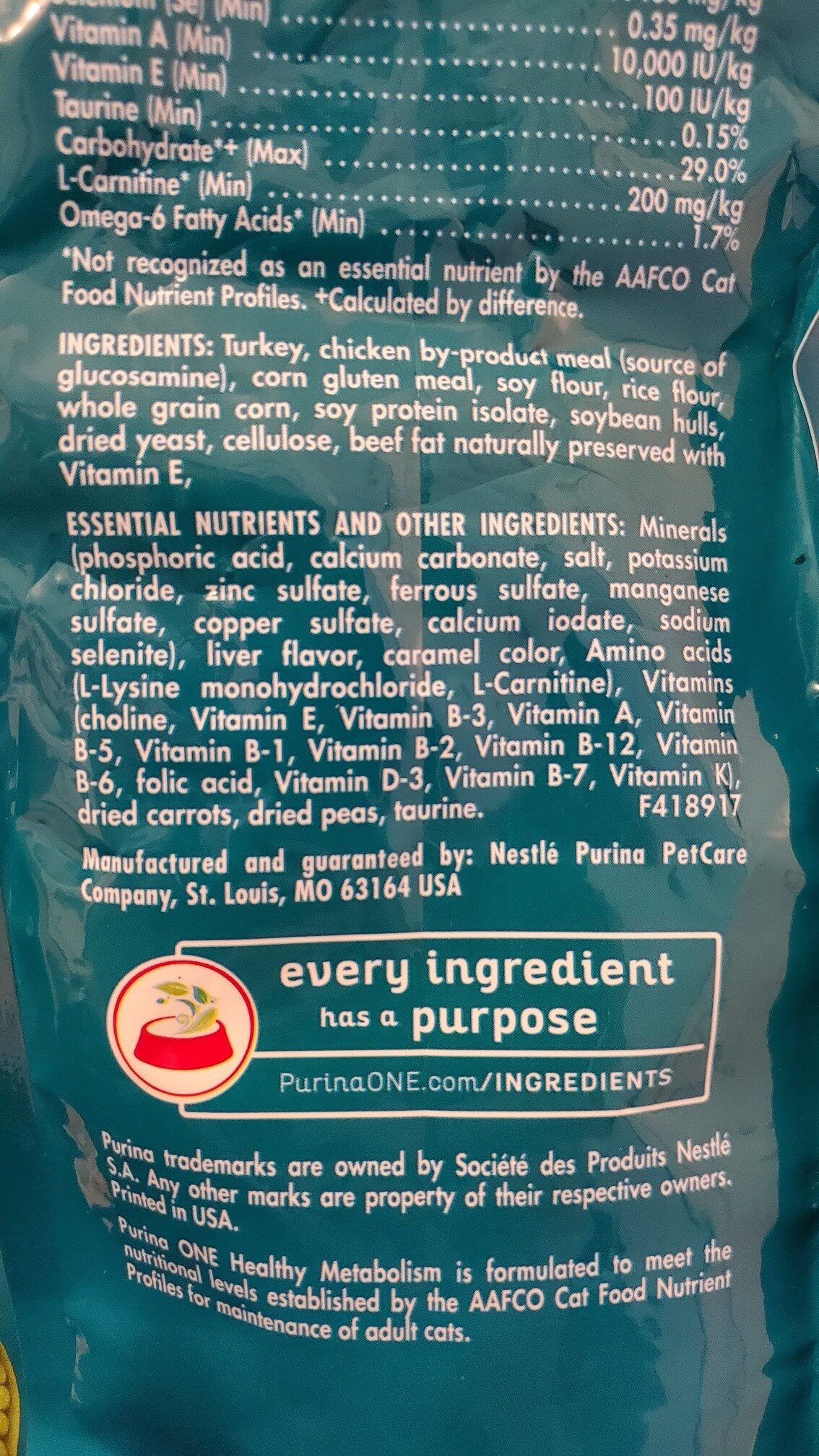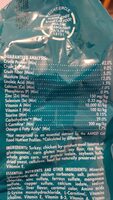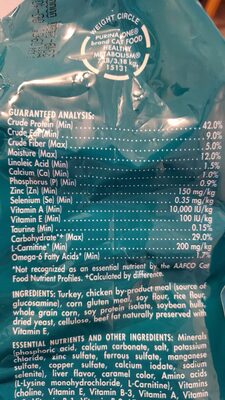Purina one : metabolism - Nestlé
Barcode: 0017800151313 (EAN / EAN-13) 017800151313 (UPC / UPC-A)
Product characteristics
Brands: Nestlé
Countries where sold: United States
Ingredients
→ Ingredients are listed in order of importance (quantity).
Substances or products causing allergies or intolerances: Soybeans
Ingredients analysis:
en:non-vegan en:non-vegetarian
→ The analysis is based solely on the ingredients listed and does not take into account processing methods.
Details of the analysis of the ingredients »
NOVA group

4 - Ultra processed food and drink products
Nutrition facts
| Nutrition facts | As sold for 100 g / 100 ml |
|---|---|
| Energy (kJ) | ? |
| Energy (kcal) | ? |
| Fat | ? |
| Carbohydrates | ? |
| Proteins | ? |
Product added on by openfoodfacts-contributors.
Last edit of product page on by sebleouf.
Product page also edited by inf, roboto-app.
